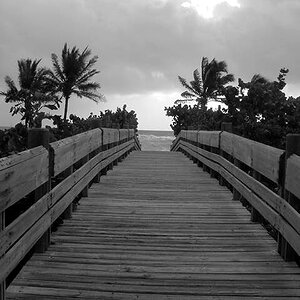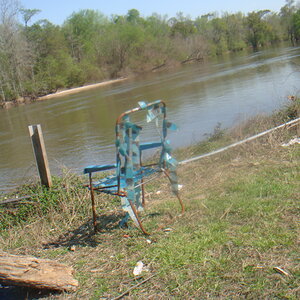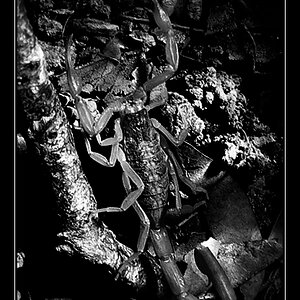Derrel
Mr. Rain Cloud
- Joined
- Jul 23, 2009
- Messages
- 48,225
- Reaction score
- 18,941
- Location
- USA
- Website
- www.pbase.com
- Can others edit my Photos
- Photos OK to edit
Well, some people say the D600 is overpriced. And to me, I think $1899 is where it will be priced in a year. BUT, keep in mind, the just-announced SONY A99 is priced at $700 MORE THAN THE NIKON. Both the A99 and the Nikon D600 share the 24.3 megapixel Sony-made image sensor. Sony JUST announced a full-frame compact, with no viewfinder, and a fixed, 35mm lens, for $2,800.
For $100 LESS than the price of a Sony A99 body, a serious enthusiast shooter can buy a new Nikon D600 AND the brand-new 24-85mm Nikkor FX zoom lens. Now, a 24 to 85mm zoom lens on a full-frame body is an AMAZING thing. For those unfamiliar with it, 24mm is a true wide-angle lens on FX. 28mm is wide-angle. 35mm is a moderate wide and VERY useful: for every foot back you move with a 35mm lens on FX, the lens covers just about one foot left to right!!! 8 foot wide subject? Stand 8 feet back! And, this is the sweet deal...the 70 to 85mm tele range is actually "telephoto"...so, basically a 24-85mm is 24,28,35,50,70,85...it's like six well-known focal lengths from WIDE to Medium telephoto, in one,single lens!
Seen this way, versus the Sony A99, or versus Canon's 22 MP 5D-III at $3,499, the $2196 this camera sells for thru Amazon ($3.00 off list price-woo hoo!) is a "bargain". Canon's original 5D, the 12.8 MP model, had 9 (as in NINE) AF points, no flash, and sold for $3499 at introduction.
For $100 LESS than the price of a Sony A99 body, a serious enthusiast shooter can buy a new Nikon D600 AND the brand-new 24-85mm Nikkor FX zoom lens. Now, a 24 to 85mm zoom lens on a full-frame body is an AMAZING thing. For those unfamiliar with it, 24mm is a true wide-angle lens on FX. 28mm is wide-angle. 35mm is a moderate wide and VERY useful: for every foot back you move with a 35mm lens on FX, the lens covers just about one foot left to right!!! 8 foot wide subject? Stand 8 feet back! And, this is the sweet deal...the 70 to 85mm tele range is actually "telephoto"...so, basically a 24-85mm is 24,28,35,50,70,85...it's like six well-known focal lengths from WIDE to Medium telephoto, in one,single lens!
Seen this way, versus the Sony A99, or versus Canon's 22 MP 5D-III at $3,499, the $2196 this camera sells for thru Amazon ($3.00 off list price-woo hoo!) is a "bargain". Canon's original 5D, the 12.8 MP model, had 9 (as in NINE) AF points, no flash, and sold for $3499 at introduction.


![[No title]](/data/xfmg/thumbnail/32/32634-5acd0e44e1d927b93e8723d9184555d9.jpg?1619735554)
![[No title]](/data/xfmg/thumbnail/40/40297-5b7d12c4c72c43b505a6f575d338d573.jpg?1619739411)




![[No title]](/data/xfmg/thumbnail/33/33026-d1cc9c60c2164adb92d7186eedb0673d.jpg?1619735840)

![[No title]](/data/xfmg/thumbnail/33/33027-0118cfc4034a37ef267ca6f8aa2fe04a.jpg?1619735841)
![[No title]](/data/xfmg/thumbnail/41/41490-6af71315284539e04ae1878cda0d613f.jpg?1619739818)

